Photo

Mixed Sentiments Towards King Peter
King Peter’s Isolation
In the hearts of the Serbian people, there’s a mix of admiration and regret for England’s refusal to recognize King Peter. While they respect England’s principled stand, they also lament the isolation it brings to King Peter himself. Despite his kind nature, King Peter feels like an outcast among kings. Neither he nor the Crown Prince has won the favor of the populace. The lack of popular support is evident when officials turn away or retreat to shops and side streets rather than salute the king. The crowds rarely cheer, and hats are seldom raised in his presence.
Ambivalence Towards the Regicide
Do the Serbian people truly approve of the violent removal of Alexander and Draga? It’s unlikely. While they may have desired the removal of the king and queen, their preference was likely exile, not murder. The conspiracy to assassinate them was driven by a faction within the army, not by the general populace. Despite their love for their country, the Serbian people have a resigned acceptance of circumstances, tinged with an Asiatic shrug of the shoulders. They recognize the disgrace brought upon their nation but fear that resistance would only lead to further bloodshed and potentially invite Austrian intervention, spelling the end of Serbia’s autonomy Private Tours Bulgaria.
Undercurrents of Conspiracy
Beneath the surface of Belgrade lies a web of conspiracy. Rumors abound of movements to hold the conspirators, including the king, accountable for their actions and even subject them to execution. There are whispers of restoring the Obrenovitch dynasty or seeking a Montenegrin prince with a clean record to ascend the throne. Some even envy Bulgaria’s progress under a foreign prince and contemplate similar paths for Serbia’s future.
0 notes
Photo
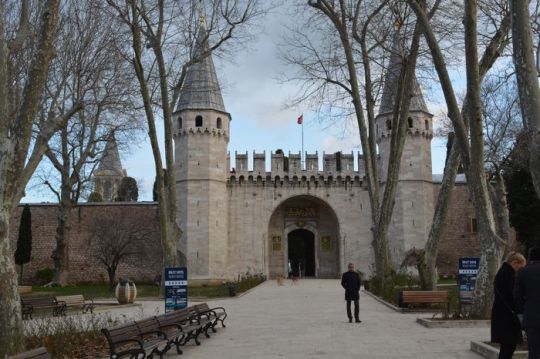
Mixed Sentiments Towards King Peter
King Peter’s Isolation
In the hearts of the Serbian people, there’s a mix of admiration and regret for England’s refusal to recognize King Peter. While they respect England’s principled stand, they also lament the isolation it brings to King Peter himself. Despite his kind nature, King Peter feels like an outcast among kings. Neither he nor the Crown Prince has won the favor of the populace. The lack of popular support is evident when officials turn away or retreat to shops and side streets rather than salute the king. The crowds rarely cheer, and hats are seldom raised in his presence.
Ambivalence Towards the Regicide
Do the Serbian people truly approve of the violent removal of Alexander and Draga? It’s unlikely. While they may have desired the removal of the king and queen, their preference was likely exile, not murder. The conspiracy to assassinate them was driven by a faction within the army, not by the general populace. Despite their love for their country, the Serbian people have a resigned acceptance of circumstances, tinged with an Asiatic shrug of the shoulders. They recognize the disgrace brought upon their nation but fear that resistance would only lead to further bloodshed and potentially invite Austrian intervention, spelling the end of Serbia’s autonomy Private Tours Bulgaria.
Undercurrents of Conspiracy
Beneath the surface of Belgrade lies a web of conspiracy. Rumors abound of movements to hold the conspirators, including the king, accountable for their actions and even subject them to execution. There are whispers of restoring the Obrenovitch dynasty or seeking a Montenegrin prince with a clean record to ascend the throne. Some even envy Bulgaria’s progress under a foreign prince and contemplate similar paths for Serbia’s future.
0 notes
Photo

Mixed Sentiments Towards King Peter
King Peter’s Isolation
In the hearts of the Serbian people, there’s a mix of admiration and regret for England’s refusal to recognize King Peter. While they respect England’s principled stand, they also lament the isolation it brings to King Peter himself. Despite his kind nature, King Peter feels like an outcast among kings. Neither he nor the Crown Prince has won the favor of the populace. The lack of popular support is evident when officials turn away or retreat to shops and side streets rather than salute the king. The crowds rarely cheer, and hats are seldom raised in his presence.
Ambivalence Towards the Regicide
Do the Serbian people truly approve of the violent removal of Alexander and Draga? It’s unlikely. While they may have desired the removal of the king and queen, their preference was likely exile, not murder. The conspiracy to assassinate them was driven by a faction within the army, not by the general populace. Despite their love for their country, the Serbian people have a resigned acceptance of circumstances, tinged with an Asiatic shrug of the shoulders. They recognize the disgrace brought upon their nation but fear that resistance would only lead to further bloodshed and potentially invite Austrian intervention, spelling the end of Serbia’s autonomy Private Tours Bulgaria.
Undercurrents of Conspiracy
Beneath the surface of Belgrade lies a web of conspiracy. Rumors abound of movements to hold the conspirators, including the king, accountable for their actions and even subject them to execution. There are whispers of restoring the Obrenovitch dynasty or seeking a Montenegrin prince with a clean record to ascend the throne. Some even envy Bulgaria’s progress under a foreign prince and contemplate similar paths for Serbia’s future.
0 notes
Photo
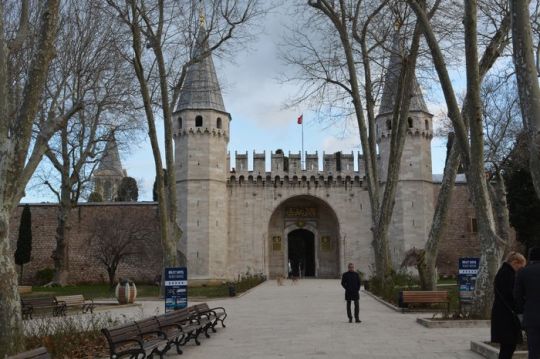
Mixed Sentiments Towards King Peter
King Peter’s Isolation
In the hearts of the Serbian people, there’s a mix of admiration and regret for England’s refusal to recognize King Peter. While they respect England’s principled stand, they also lament the isolation it brings to King Peter himself. Despite his kind nature, King Peter feels like an outcast among kings. Neither he nor the Crown Prince has won the favor of the populace. The lack of popular support is evident when officials turn away or retreat to shops and side streets rather than salute the king. The crowds rarely cheer, and hats are seldom raised in his presence.
Ambivalence Towards the Regicide
Do the Serbian people truly approve of the violent removal of Alexander and Draga? It’s unlikely. While they may have desired the removal of the king and queen, their preference was likely exile, not murder. The conspiracy to assassinate them was driven by a faction within the army, not by the general populace. Despite their love for their country, the Serbian people have a resigned acceptance of circumstances, tinged with an Asiatic shrug of the shoulders. They recognize the disgrace brought upon their nation but fear that resistance would only lead to further bloodshed and potentially invite Austrian intervention, spelling the end of Serbia’s autonomy Private Tours Bulgaria.
Undercurrents of Conspiracy
Beneath the surface of Belgrade lies a web of conspiracy. Rumors abound of movements to hold the conspirators, including the king, accountable for their actions and even subject them to execution. There are whispers of restoring the Obrenovitch dynasty or seeking a Montenegrin prince with a clean record to ascend the throne. Some even envy Bulgaria’s progress under a foreign prince and contemplate similar paths for Serbia’s future.
0 notes
Photo

Mixed Sentiments Towards King Peter
King Peter’s Isolation
In the hearts of the Serbian people, there’s a mix of admiration and regret for England’s refusal to recognize King Peter. While they respect England’s principled stand, they also lament the isolation it brings to King Peter himself. Despite his kind nature, King Peter feels like an outcast among kings. Neither he nor the Crown Prince has won the favor of the populace. The lack of popular support is evident when officials turn away or retreat to shops and side streets rather than salute the king. The crowds rarely cheer, and hats are seldom raised in his presence.
Ambivalence Towards the Regicide
Do the Serbian people truly approve of the violent removal of Alexander and Draga? It’s unlikely. While they may have desired the removal of the king and queen, their preference was likely exile, not murder. The conspiracy to assassinate them was driven by a faction within the army, not by the general populace. Despite their love for their country, the Serbian people have a resigned acceptance of circumstances, tinged with an Asiatic shrug of the shoulders. They recognize the disgrace brought upon their nation but fear that resistance would only lead to further bloodshed and potentially invite Austrian intervention, spelling the end of Serbia’s autonomy Private Tours Bulgaria.
Undercurrents of Conspiracy
Beneath the surface of Belgrade lies a web of conspiracy. Rumors abound of movements to hold the conspirators, including the king, accountable for their actions and even subject them to execution. There are whispers of restoring the Obrenovitch dynasty or seeking a Montenegrin prince with a clean record to ascend the throne. Some even envy Bulgaria’s progress under a foreign prince and contemplate similar paths for Serbia’s future.
0 notes
Photo
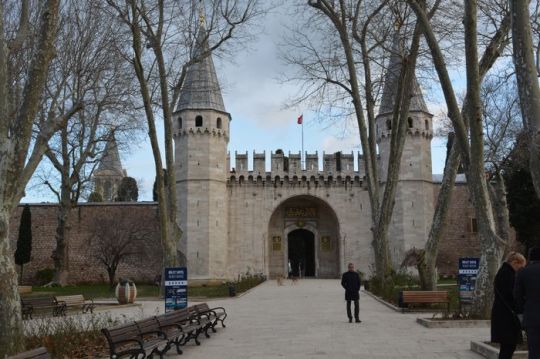
Mixed Sentiments Towards King Peter
King Peter’s Isolation
In the hearts of the Serbian people, there’s a mix of admiration and regret for England’s refusal to recognize King Peter. While they respect England’s principled stand, they also lament the isolation it brings to King Peter himself. Despite his kind nature, King Peter feels like an outcast among kings. Neither he nor the Crown Prince has won the favor of the populace. The lack of popular support is evident when officials turn away or retreat to shops and side streets rather than salute the king. The crowds rarely cheer, and hats are seldom raised in his presence.
Ambivalence Towards the Regicide
Do the Serbian people truly approve of the violent removal of Alexander and Draga? It’s unlikely. While they may have desired the removal of the king and queen, their preference was likely exile, not murder. The conspiracy to assassinate them was driven by a faction within the army, not by the general populace. Despite their love for their country, the Serbian people have a resigned acceptance of circumstances, tinged with an Asiatic shrug of the shoulders. They recognize the disgrace brought upon their nation but fear that resistance would only lead to further bloodshed and potentially invite Austrian intervention, spelling the end of Serbia’s autonomy Private Tours Bulgaria.
Undercurrents of Conspiracy
Beneath the surface of Belgrade lies a web of conspiracy. Rumors abound of movements to hold the conspirators, including the king, accountable for their actions and even subject them to execution. There are whispers of restoring the Obrenovitch dynasty or seeking a Montenegrin prince with a clean record to ascend the throne. Some even envy Bulgaria’s progress under a foreign prince and contemplate similar paths for Serbia’s future.
0 notes
Photo
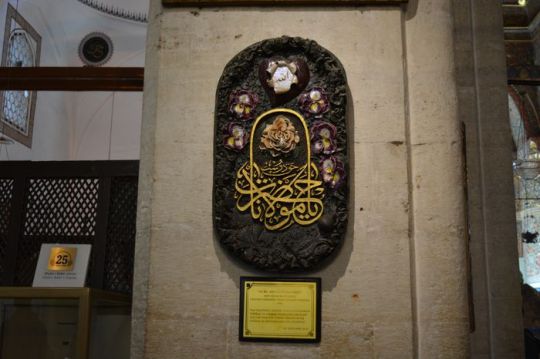
Unveiling the Mysteries of Thracian Temples
The Temple in the Golyama Arsenalka Mound
In the 5th century BC, a temple emerged within the Golyama Arsenalka mound, offering a glimpse into ancient Thracian beliefs. The temple’s floor, crafted from meticulously arranged flagstones, unveils a circular recess symbolizing the sun. Encircling this central motif are three concentric belts, reflecting the Thracian concept of the Universe encompassing underground, terrestrial, and celestial realms. Although ancient plundering has disturbed the site, remnants of golden jewelry have been discovered amidst the gaps.
A Glimpse into Royal Burials
Within this burial ground lies the resting place of a Thracian ruler, dating back to ancient times. Among the remarkable discoveries within the tomb is a golden mask, a unique artifact within Thracian territories, alongside a distinctive signature ring. The ruler’s interment included an array of weaponry and armor, comprising a breastplate, swords, lances, and arrows, rendering this find one of the most opulent in Bulgaria’s history Private Tour Istanbul.
The Temple of Seuthes III (Golyama Kosmatka)
Constructed during the latter half of the 5th century BC, the Temple of Seuthes III within the Golyama Kosmatka mound boasts a complex architectural design. Comprising a rectangular chamber, a circular chamber, and a sarcophagus hall, the temple stands as a testament to Thracian spiritual practices. Noteworthy are the vibrant adornments embellishing the marble gate, symbolizing the cardinal directions and the cyclical nature of existence. Within the tomb, a treasure trove awaits discovery, including a magnificent golden wreath, ornate wine goblets, and intricately decorated armor pieces.
Celebrating Thracian Heritage
Experience the enchanting allure of Thracian rituals during the annual Celebrations of the Valley of the Thracian Kings, held on 2nd and 3rd September. This event, inspired by the rich cultural heritage of the Thracians, aims to foster a deeper appreciation for their way of life. The festivities encompass a diverse array of activities, from exhibitions showcasing Thracian heritage through the eyes of artists to guided tours of the Valley of the Thracian Kings. Additionally, a scientific symposium delves into the significance of cultural tourism in the Thracian lands, offering insights for both scholars and enthusiasts alike.
Unlocking the Past: Embracing Thracian Legacy
Join us in unraveling the mysteries of ancient Thracian temples and celebrating the enduring legacy of this remarkable civilization. Through exploration, discovery, and cultural immersion, let us embark on a journey through time, where the echoes of Thracian rituals and traditions resonate with timeless allure.
0 notes
Photo

Unveiling the Mysteries of Thracian Temples
The Temple in the Golyama Arsenalka Mound
In the 5th century BC, a temple emerged within the Golyama Arsenalka mound, offering a glimpse into ancient Thracian beliefs. The temple’s floor, crafted from meticulously arranged flagstones, unveils a circular recess symbolizing the sun. Encircling this central motif are three concentric belts, reflecting the Thracian concept of the Universe encompassing underground, terrestrial, and celestial realms. Although ancient plundering has disturbed the site, remnants of golden jewelry have been discovered amidst the gaps.
A Glimpse into Royal Burials
Within this burial ground lies the resting place of a Thracian ruler, dating back to ancient times. Among the remarkable discoveries within the tomb is a golden mask, a unique artifact within Thracian territories, alongside a distinctive signature ring. The ruler’s interment included an array of weaponry and armor, comprising a breastplate, swords, lances, and arrows, rendering this find one of the most opulent in Bulgaria’s history Private Tour Istanbul.
The Temple of Seuthes III (Golyama Kosmatka)
Constructed during the latter half of the 5th century BC, the Temple of Seuthes III within the Golyama Kosmatka mound boasts a complex architectural design. Comprising a rectangular chamber, a circular chamber, and a sarcophagus hall, the temple stands as a testament to Thracian spiritual practices. Noteworthy are the vibrant adornments embellishing the marble gate, symbolizing the cardinal directions and the cyclical nature of existence. Within the tomb, a treasure trove awaits discovery, including a magnificent golden wreath, ornate wine goblets, and intricately decorated armor pieces.
Celebrating Thracian Heritage
Experience the enchanting allure of Thracian rituals during the annual Celebrations of the Valley of the Thracian Kings, held on 2nd and 3rd September. This event, inspired by the rich cultural heritage of the Thracians, aims to foster a deeper appreciation for their way of life. The festivities encompass a diverse array of activities, from exhibitions showcasing Thracian heritage through the eyes of artists to guided tours of the Valley of the Thracian Kings. Additionally, a scientific symposium delves into the significance of cultural tourism in the Thracian lands, offering insights for both scholars and enthusiasts alike.
Unlocking the Past: Embracing Thracian Legacy
Join us in unraveling the mysteries of ancient Thracian temples and celebrating the enduring legacy of this remarkable civilization. Through exploration, discovery, and cultural immersion, let us embark on a journey through time, where the echoes of Thracian rituals and traditions resonate with timeless allure.
0 notes
Photo
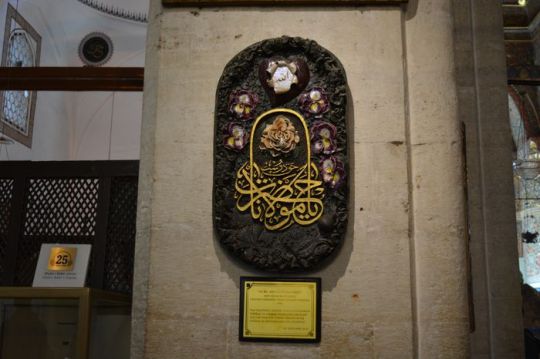
Unveiling the Mysteries of Thracian Temples
The Temple in the Golyama Arsenalka Mound
In the 5th century BC, a temple emerged within the Golyama Arsenalka mound, offering a glimpse into ancient Thracian beliefs. The temple’s floor, crafted from meticulously arranged flagstones, unveils a circular recess symbolizing the sun. Encircling this central motif are three concentric belts, reflecting the Thracian concept of the Universe encompassing underground, terrestrial, and celestial realms. Although ancient plundering has disturbed the site, remnants of golden jewelry have been discovered amidst the gaps.
A Glimpse into Royal Burials
Within this burial ground lies the resting place of a Thracian ruler, dating back to ancient times. Among the remarkable discoveries within the tomb is a golden mask, a unique artifact within Thracian territories, alongside a distinctive signature ring. The ruler’s interment included an array of weaponry and armor, comprising a breastplate, swords, lances, and arrows, rendering this find one of the most opulent in Bulgaria’s history Private Tour Istanbul.
The Temple of Seuthes III (Golyama Kosmatka)
Constructed during the latter half of the 5th century BC, the Temple of Seuthes III within the Golyama Kosmatka mound boasts a complex architectural design. Comprising a rectangular chamber, a circular chamber, and a sarcophagus hall, the temple stands as a testament to Thracian spiritual practices. Noteworthy are the vibrant adornments embellishing the marble gate, symbolizing the cardinal directions and the cyclical nature of existence. Within the tomb, a treasure trove awaits discovery, including a magnificent golden wreath, ornate wine goblets, and intricately decorated armor pieces.
Celebrating Thracian Heritage
Experience the enchanting allure of Thracian rituals during the annual Celebrations of the Valley of the Thracian Kings, held on 2nd and 3rd September. This event, inspired by the rich cultural heritage of the Thracians, aims to foster a deeper appreciation for their way of life. The festivities encompass a diverse array of activities, from exhibitions showcasing Thracian heritage through the eyes of artists to guided tours of the Valley of the Thracian Kings. Additionally, a scientific symposium delves into the significance of cultural tourism in the Thracian lands, offering insights for both scholars and enthusiasts alike.
Unlocking the Past: Embracing Thracian Legacy
Join us in unraveling the mysteries of ancient Thracian temples and celebrating the enduring legacy of this remarkable civilization. Through exploration, discovery, and cultural immersion, let us embark on a journey through time, where the echoes of Thracian rituals and traditions resonate with timeless allure.
0 notes
Photo

Unveiling the Mysteries of Thracian Temples
The Temple in the Golyama Arsenalka Mound
In the 5th century BC, a temple emerged within the Golyama Arsenalka mound, offering a glimpse into ancient Thracian beliefs. The temple’s floor, crafted from meticulously arranged flagstones, unveils a circular recess symbolizing the sun. Encircling this central motif are three concentric belts, reflecting the Thracian concept of the Universe encompassing underground, terrestrial, and celestial realms. Although ancient plundering has disturbed the site, remnants of golden jewelry have been discovered amidst the gaps.
A Glimpse into Royal Burials
Within this burial ground lies the resting place of a Thracian ruler, dating back to ancient times. Among the remarkable discoveries within the tomb is a golden mask, a unique artifact within Thracian territories, alongside a distinctive signature ring. The ruler’s interment included an array of weaponry and armor, comprising a breastplate, swords, lances, and arrows, rendering this find one of the most opulent in Bulgaria’s history Private Tour Istanbul.
The Temple of Seuthes III (Golyama Kosmatka)
Constructed during the latter half of the 5th century BC, the Temple of Seuthes III within the Golyama Kosmatka mound boasts a complex architectural design. Comprising a rectangular chamber, a circular chamber, and a sarcophagus hall, the temple stands as a testament to Thracian spiritual practices. Noteworthy are the vibrant adornments embellishing the marble gate, symbolizing the cardinal directions and the cyclical nature of existence. Within the tomb, a treasure trove awaits discovery, including a magnificent golden wreath, ornate wine goblets, and intricately decorated armor pieces.
Celebrating Thracian Heritage
Experience the enchanting allure of Thracian rituals during the annual Celebrations of the Valley of the Thracian Kings, held on 2nd and 3rd September. This event, inspired by the rich cultural heritage of the Thracians, aims to foster a deeper appreciation for their way of life. The festivities encompass a diverse array of activities, from exhibitions showcasing Thracian heritage through the eyes of artists to guided tours of the Valley of the Thracian Kings. Additionally, a scientific symposium delves into the significance of cultural tourism in the Thracian lands, offering insights for both scholars and enthusiasts alike.
Unlocking the Past: Embracing Thracian Legacy
Join us in unraveling the mysteries of ancient Thracian temples and celebrating the enduring legacy of this remarkable civilization. Through exploration, discovery, and cultural immersion, let us embark on a journey through time, where the echoes of Thracian rituals and traditions resonate with timeless allure.
0 notes
Photo
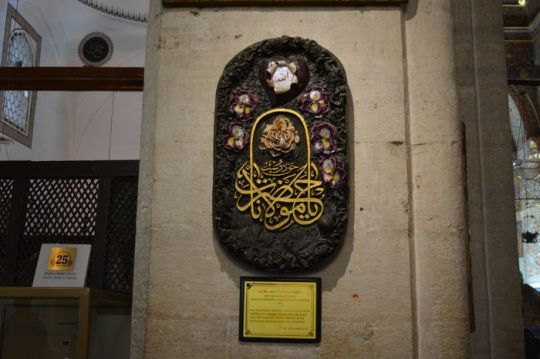
Unveiling the Mysteries of Thracian Temples
The Temple in the Golyama Arsenalka Mound
In the 5th century BC, a temple emerged within the Golyama Arsenalka mound, offering a glimpse into ancient Thracian beliefs. The temple’s floor, crafted from meticulously arranged flagstones, unveils a circular recess symbolizing the sun. Encircling this central motif are three concentric belts, reflecting the Thracian concept of the Universe encompassing underground, terrestrial, and celestial realms. Although ancient plundering has disturbed the site, remnants of golden jewelry have been discovered amidst the gaps.
A Glimpse into Royal Burials
Within this burial ground lies the resting place of a Thracian ruler, dating back to ancient times. Among the remarkable discoveries within the tomb is a golden mask, a unique artifact within Thracian territories, alongside a distinctive signature ring. The ruler’s interment included an array of weaponry and armor, comprising a breastplate, swords, lances, and arrows, rendering this find one of the most opulent in Bulgaria’s history Private Tour Istanbul.
The Temple of Seuthes III (Golyama Kosmatka)
Constructed during the latter half of the 5th century BC, the Temple of Seuthes III within the Golyama Kosmatka mound boasts a complex architectural design. Comprising a rectangular chamber, a circular chamber, and a sarcophagus hall, the temple stands as a testament to Thracian spiritual practices. Noteworthy are the vibrant adornments embellishing the marble gate, symbolizing the cardinal directions and the cyclical nature of existence. Within the tomb, a treasure trove awaits discovery, including a magnificent golden wreath, ornate wine goblets, and intricately decorated armor pieces.
Celebrating Thracian Heritage
Experience the enchanting allure of Thracian rituals during the annual Celebrations of the Valley of the Thracian Kings, held on 2nd and 3rd September. This event, inspired by the rich cultural heritage of the Thracians, aims to foster a deeper appreciation for their way of life. The festivities encompass a diverse array of activities, from exhibitions showcasing Thracian heritage through the eyes of artists to guided tours of the Valley of the Thracian Kings. Additionally, a scientific symposium delves into the significance of cultural tourism in the Thracian lands, offering insights for both scholars and enthusiasts alike.
Unlocking the Past: Embracing Thracian Legacy
Join us in unraveling the mysteries of ancient Thracian temples and celebrating the enduring legacy of this remarkable civilization. Through exploration, discovery, and cultural immersion, let us embark on a journey through time, where the echoes of Thracian rituals and traditions resonate with timeless allure.
0 notes
Photo

Unveiling the Mysteries of Thracian Temples
The Temple in the Golyama Arsenalka Mound
In the 5th century BC, a temple emerged within the Golyama Arsenalka mound, offering a glimpse into ancient Thracian beliefs. The temple’s floor, crafted from meticulously arranged flagstones, unveils a circular recess symbolizing the sun. Encircling this central motif are three concentric belts, reflecting the Thracian concept of the Universe encompassing underground, terrestrial, and celestial realms. Although ancient plundering has disturbed the site, remnants of golden jewelry have been discovered amidst the gaps.
A Glimpse into Royal Burials
Within this burial ground lies the resting place of a Thracian ruler, dating back to ancient times. Among the remarkable discoveries within the tomb is a golden mask, a unique artifact within Thracian territories, alongside a distinctive signature ring. The ruler’s interment included an array of weaponry and armor, comprising a breastplate, swords, lances, and arrows, rendering this find one of the most opulent in Bulgaria’s history Private Tour Istanbul.
The Temple of Seuthes III (Golyama Kosmatka)
Constructed during the latter half of the 5th century BC, the Temple of Seuthes III within the Golyama Kosmatka mound boasts a complex architectural design. Comprising a rectangular chamber, a circular chamber, and a sarcophagus hall, the temple stands as a testament to Thracian spiritual practices. Noteworthy are the vibrant adornments embellishing the marble gate, symbolizing the cardinal directions and the cyclical nature of existence. Within the tomb, a treasure trove awaits discovery, including a magnificent golden wreath, ornate wine goblets, and intricately decorated armor pieces.
Celebrating Thracian Heritage
Experience the enchanting allure of Thracian rituals during the annual Celebrations of the Valley of the Thracian Kings, held on 2nd and 3rd September. This event, inspired by the rich cultural heritage of the Thracians, aims to foster a deeper appreciation for their way of life. The festivities encompass a diverse array of activities, from exhibitions showcasing Thracian heritage through the eyes of artists to guided tours of the Valley of the Thracian Kings. Additionally, a scientific symposium delves into the significance of cultural tourism in the Thracian lands, offering insights for both scholars and enthusiasts alike.
Unlocking the Past: Embracing Thracian Legacy
Join us in unraveling the mysteries of ancient Thracian temples and celebrating the enduring legacy of this remarkable civilization. Through exploration, discovery, and cultural immersion, let us embark on a journey through time, where the echoes of Thracian rituals and traditions resonate with timeless allure.
0 notes
Photo
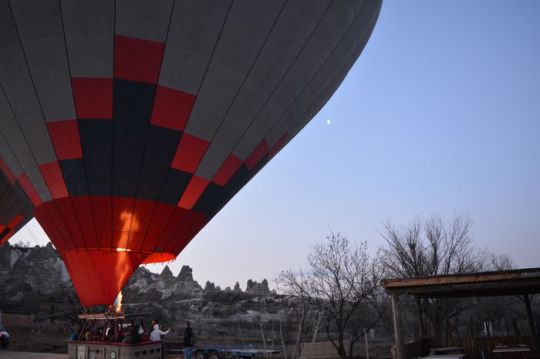
Exploring Thracian Heritage
The Valley of the Thracian Kings in Bulgaria, particularly in Kazanlak, boasts a rich Thracian heritage. Explore the ancient tombs surrounding the town, unraveling the mysteries of the Thracian civilization. Despite the ancient capital being submerged under Koprinka Lake, artifacts displayed at Iskra Museum offer a glimpse into its magnificence.
Historic Landmarks
Kazanlak is a land of beauty and mystery, adorned with historic sites like the UNESCO-listed Kazanlak Thracian Tomb and the Golyama Kosmatka, Ostrusha, and Svetitsa Mounds. Delve into the enigmatic world of the ancient Thracians by marveling at priceless artifacts such as the bronze head of Seuthes III and ancient frescoes. Museums and galleries provide deeper insights into the town’s past and Bulgarian traditions.
Rose Festival
Experience the allure of the Valley of Roses, where Rosa Damascena reigns supreme. Don’t miss the brief but enchanting period in late May to early June when the roses bloom, celebrated with gusto at the Rose Festival. Join the festivities, including the crowning of the Rose Queen, rose-picking rituals, and vibrant parades, immersing yourself in the region’s rose-growing traditions Istanbul Cultural Tours.
Natural Wonders
The Valley offers unforgettable experiences amidst its abundant natural beauty. From the balmy lowland climate to majestic mountains, verdant forests, and pristine lakes, the senses are rejuvenated. Embark on scenic hikes to Buzludzha Peak for panoramic views or explore charming villages on a biking tour, promising a delightful and rejuvenating vacation experience.
0 notes
Photo

Exploring Thracian Heritage
The Valley of the Thracian Kings in Bulgaria, particularly in Kazanlak, boasts a rich Thracian heritage. Explore the ancient tombs surrounding the town, unraveling the mysteries of the Thracian civilization. Despite the ancient capital being submerged under Koprinka Lake, artifacts displayed at Iskra Museum offer a glimpse into its magnificence.
Historic Landmarks
Kazanlak is a land of beauty and mystery, adorned with historic sites like the UNESCO-listed Kazanlak Thracian Tomb and the Golyama Kosmatka, Ostrusha, and Svetitsa Mounds. Delve into the enigmatic world of the ancient Thracians by marveling at priceless artifacts such as the bronze head of Seuthes III and ancient frescoes. Museums and galleries provide deeper insights into the town’s past and Bulgarian traditions.
Rose Festival
Experience the allure of the Valley of Roses, where Rosa Damascena reigns supreme. Don’t miss the brief but enchanting period in late May to early June when the roses bloom, celebrated with gusto at the Rose Festival. Join the festivities, including the crowning of the Rose Queen, rose-picking rituals, and vibrant parades, immersing yourself in the region’s rose-growing traditions Istanbul Cultural Tours.
Natural Wonders
The Valley offers unforgettable experiences amidst its abundant natural beauty. From the balmy lowland climate to majestic mountains, verdant forests, and pristine lakes, the senses are rejuvenated. Embark on scenic hikes to Buzludzha Peak for panoramic views or explore charming villages on a biking tour, promising a delightful and rejuvenating vacation experience.
0 notes
Photo
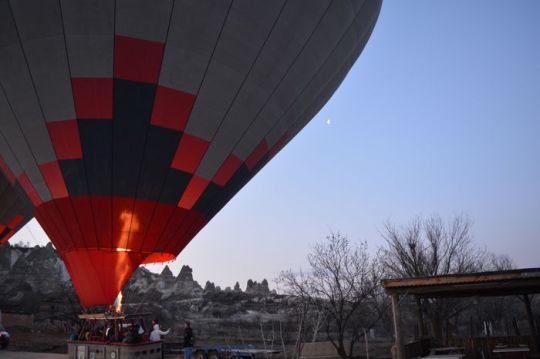
Exploring Thracian Heritage
The Valley of the Thracian Kings in Bulgaria, particularly in Kazanlak, boasts a rich Thracian heritage. Explore the ancient tombs surrounding the town, unraveling the mysteries of the Thracian civilization. Despite the ancient capital being submerged under Koprinka Lake, artifacts displayed at Iskra Museum offer a glimpse into its magnificence.
Historic Landmarks
Kazanlak is a land of beauty and mystery, adorned with historic sites like the UNESCO-listed Kazanlak Thracian Tomb and the Golyama Kosmatka, Ostrusha, and Svetitsa Mounds. Delve into the enigmatic world of the ancient Thracians by marveling at priceless artifacts such as the bronze head of Seuthes III and ancient frescoes. Museums and galleries provide deeper insights into the town’s past and Bulgarian traditions.
Rose Festival
Experience the allure of the Valley of Roses, where Rosa Damascena reigns supreme. Don’t miss the brief but enchanting period in late May to early June when the roses bloom, celebrated with gusto at the Rose Festival. Join the festivities, including the crowning of the Rose Queen, rose-picking rituals, and vibrant parades, immersing yourself in the region’s rose-growing traditions Istanbul Cultural Tours.
Natural Wonders
The Valley offers unforgettable experiences amidst its abundant natural beauty. From the balmy lowland climate to majestic mountains, verdant forests, and pristine lakes, the senses are rejuvenated. Embark on scenic hikes to Buzludzha Peak for panoramic views or explore charming villages on a biking tour, promising a delightful and rejuvenating vacation experience.
0 notes
Photo
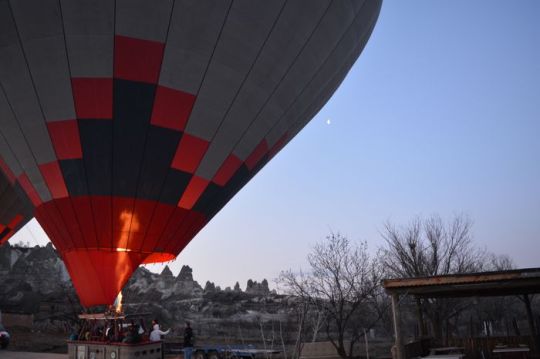
Exploring Thracian Heritage
The Valley of the Thracian Kings in Bulgaria, particularly in Kazanlak, boasts a rich Thracian heritage. Explore the ancient tombs surrounding the town, unraveling the mysteries of the Thracian civilization. Despite the ancient capital being submerged under Koprinka Lake, artifacts displayed at Iskra Museum offer a glimpse into its magnificence.
Historic Landmarks
Kazanlak is a land of beauty and mystery, adorned with historic sites like the UNESCO-listed Kazanlak Thracian Tomb and the Golyama Kosmatka, Ostrusha, and Svetitsa Mounds. Delve into the enigmatic world of the ancient Thracians by marveling at priceless artifacts such as the bronze head of Seuthes III and ancient frescoes. Museums and galleries provide deeper insights into the town’s past and Bulgarian traditions.
Rose Festival
Experience the allure of the Valley of Roses, where Rosa Damascena reigns supreme. Don’t miss the brief but enchanting period in late May to early June when the roses bloom, celebrated with gusto at the Rose Festival. Join the festivities, including the crowning of the Rose Queen, rose-picking rituals, and vibrant parades, immersing yourself in the region’s rose-growing traditions Istanbul Cultural Tours.
Natural Wonders
The Valley offers unforgettable experiences amidst its abundant natural beauty. From the balmy lowland climate to majestic mountains, verdant forests, and pristine lakes, the senses are rejuvenated. Embark on scenic hikes to Buzludzha Peak for panoramic views or explore charming villages on a biking tour, promising a delightful and rejuvenating vacation experience.
0 notes
Photo
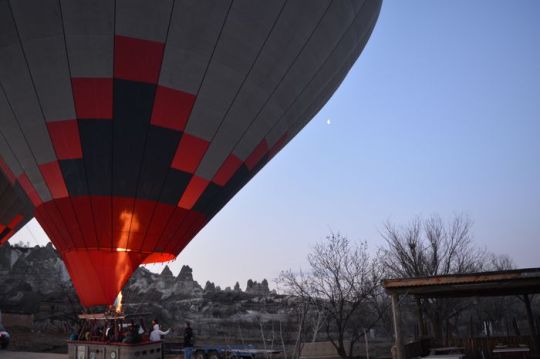
Exploring Thracian Heritage
The Valley of the Thracian Kings in Bulgaria, particularly in Kazanlak, boasts a rich Thracian heritage. Explore the ancient tombs surrounding the town, unraveling the mysteries of the Thracian civilization. Despite the ancient capital being submerged under Koprinka Lake, artifacts displayed at Iskra Museum offer a glimpse into its magnificence.
Historic Landmarks
Kazanlak is a land of beauty and mystery, adorned with historic sites like the UNESCO-listed Kazanlak Thracian Tomb and the Golyama Kosmatka, Ostrusha, and Svetitsa Mounds. Delve into the enigmatic world of the ancient Thracians by marveling at priceless artifacts such as the bronze head of Seuthes III and ancient frescoes. Museums and galleries provide deeper insights into the town’s past and Bulgarian traditions.
Rose Festival
Experience the allure of the Valley of Roses, where Rosa Damascena reigns supreme. Don’t miss the brief but enchanting period in late May to early June when the roses bloom, celebrated with gusto at the Rose Festival. Join the festivities, including the crowning of the Rose Queen, rose-picking rituals, and vibrant parades, immersing yourself in the region’s rose-growing traditions Istanbul Cultural Tours.
Natural Wonders
The Valley offers unforgettable experiences amidst its abundant natural beauty. From the balmy lowland climate to majestic mountains, verdant forests, and pristine lakes, the senses are rejuvenated. Embark on scenic hikes to Buzludzha Peak for panoramic views or explore charming villages on a biking tour, promising a delightful and rejuvenating vacation experience.
0 notes